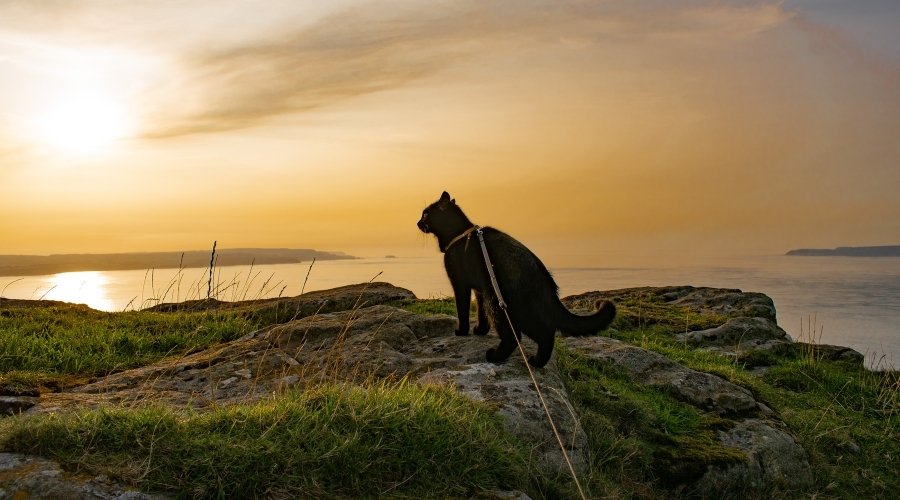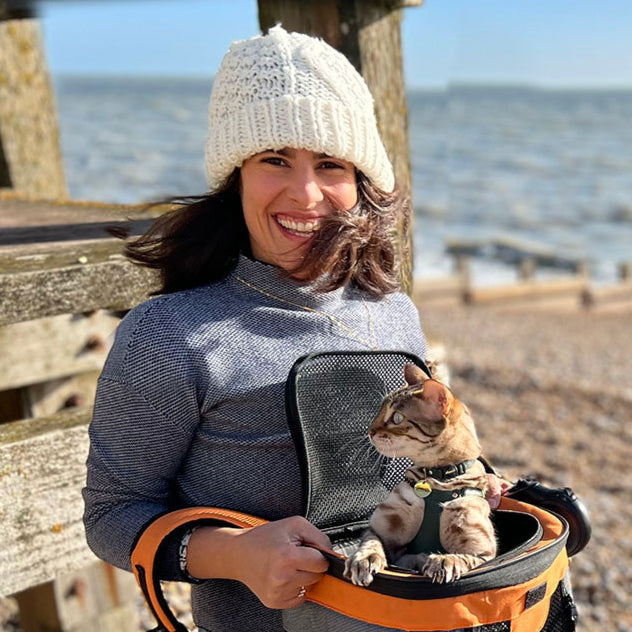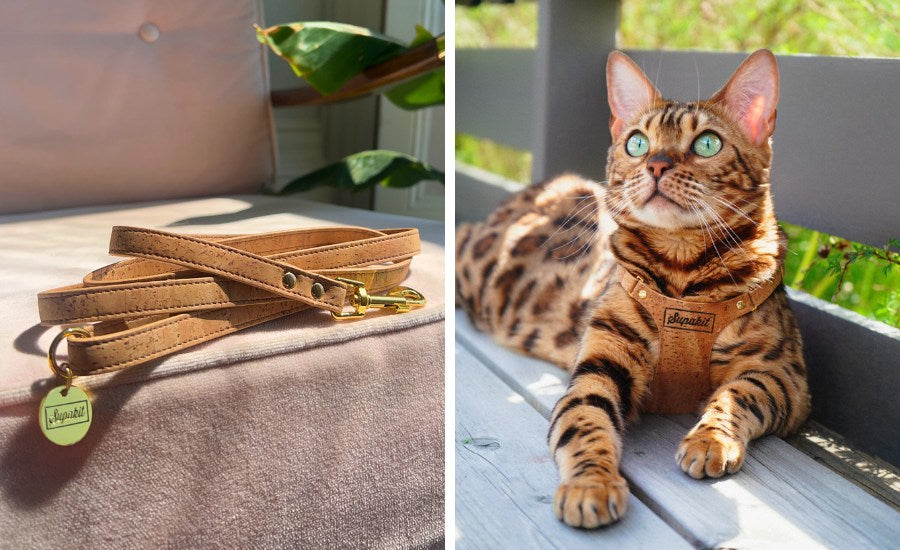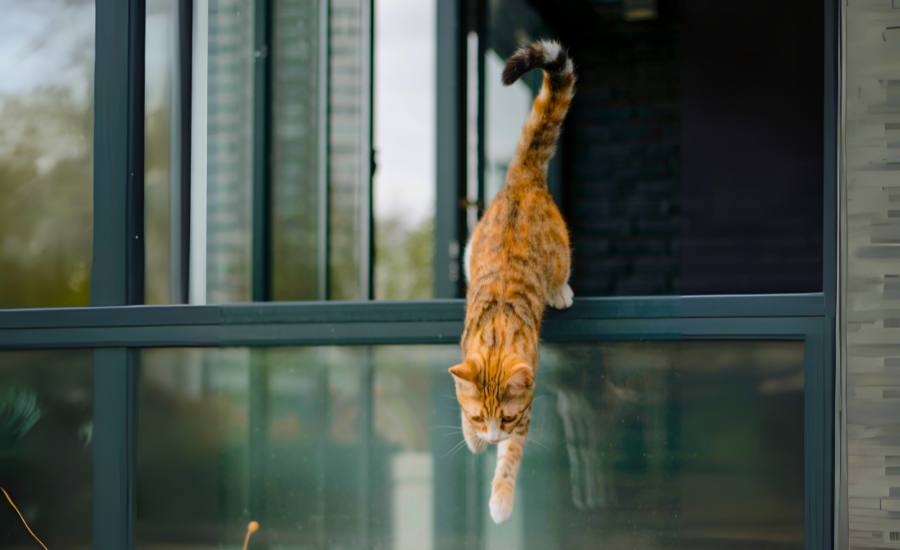Black Cat Photography: How to Take Amazing Photos of Your Black Cat
Have you ever seen a striking photo of a black cat on social media and thought “how have they done that!?”, us too! Black cats are notoriously hard to photograph due to their beautifully rich coloured floof, which sometimes makes it difficult to capture their stunning features.
Well, fear not, we have been lucky enough to speak to black cat photography expert, Irish Adventure Kitty’s meowmy, Rachel; she is a talented photographer who has found the formula to capturing Mila’s silky black furr and gorgeous features in her photographs. Their Instagram @irish_adventure_kitty is flooded with amazing images of stunning Mila in the beautiful Irish countryside – but how does she do it?
She has shared her top tips on how to photograph black cats with us, and we are absolutely thrilled to be able to pass this knowledge on to the Supakit community!
Read on to discover the secret to photographing black cats, and to see some of Rachel’s incredible work.

So Rachel, what equipment do you use to photograph Mila?
I use a Nikon D3500 with the AF-P DX NIKKOR 18–55mm VR zoom lens, and the AF-P DX NIKKOR 70–300mm VR super-telephoto zoom lens. When I'm taking any video footage, I usually record it on my Samsung s10+ mobile phone.
Are there any handy bits of kit that you would recommend to someone who wants to know how to photograph a black cat?
I noticed a huge difference in the quality of photos going from a phone camera to a proper camera, it's worth the investment if you want to take your photos to the next level!
Having the choice of lens has also got advantages for different photos.
I use the 18-55mm when I want to include scenery or the 70-300mm for up close portrait shots.
I would say having the Adobe Lightroom app is a huge plus to helping achieve the best photos of black cats, most of the magic happens when I get the photos edited. I recommend taking photos in RAW format. This means you have the most data to be able to make adjustments and edits because your camera is capturing all the data from it's sensors and produces higher quality images for you to work with.
What are the challenges of black cat photography?
Lighting is usually what brings about the most difficulties. Sometimes the lighting for the photo location could be on point but your cat is too dark (under exposed), or else the lighting on your cat could be good but the background is over exposed and washed out looking. Trying to achieve the right lighting for both can be problematic which is where I find Adobe lightroom becomes useful. It's great for making adjustments to correct lighting and colour after you've taken your photo.

Are there any times of day when the light is better for photographing black cats?
Any time during daylight is good, I haven't got a specific time I shoot at. It more depends on the type of sunlight. Sometimes too much sun can cause a bit of a glare, not enough light and your cat can blend into the shadows.
A bright overcast day can be great for lighting, or on a sunny day, dappled shade among some trees can work well.
If it's late in the evening and the sun is setting, the photo quality can start to drop. So, I do recommend getting outside well before dusk to get your photos.
If you're taking photographs outside, do you try to make sure the sun is in a certain position in relation to you and Mila? E.g. behind you, behind Mila etc..
It really depends on the photo you are after but generally I have the sun behind me or off to one side while I take Mila's photo so the lighting shows up her face and features well. If you want to get a dramatic silhouette shot, have the sun positioned behind your cat.

What sort of backgrounds work best for photographing a black cat?
Choose backdrops that aren't too dark, so your cat doesn't get lost in the photo. When I'm taking a photo, sometimes I'll reposition myself so the background showing behind Mila is lighter than her. Try getting down lower to your cat’s height or moving around to get a different angle when taking photos and see what helps make your cat stand out in the shot. Also, take lots of photos! Sometimes I could take 20 photos in the same location just to get 2 shots I love.
I take photos in all kinds of scenery but photographing Mila in mossy forests is definitely one of my favourite places. Something about all the green really makes Mila's black coat pop.

Do you do any editing after taking your photos? What are your top tips for editing photographs of black cats?
Yeah, this is where I feel my photos come to life. Adobe lightroom is the software I use for all my editing. I taught myself to use it and gradually over time, found my own style and way of doing things.
I personally like to keep my photos as realistic as possible (not heavily filtered) and focus on enhancing Mila and the scenery. I feel my editing style is more like a colour and lighting correction so the photos portray how I saw the scenery in real life. It's good to play about and find your own style. Some people prefer to have a more whimsical style and experiment with colours etc. I love seeing everyone's different editing styles.
One of the struggles when photographing black cats is the colour they can sometimes appear. Black cats will often have blue/purple hues in photos. By warming up the overall temperature of the photo, this can sometimes help. (Moving the blue/yellow colour bar to higher yellow level). I use the selective colour tool to lower the saturation of the colours in the fur, I use the colour picker to see which colours I need to edit.
By using the selective radial editing tool on Mila, I can darken the black (found under "light" editing) which helps give her true black fur instead of faded. This makes her the darkest part of the photo, which in turn makes her stand out more. Adjusting the shadows (light) allows you to see a lot more features on your black cat if your original photo came out quite dark (this is where shooting in raw helps because a lot of the photo may be recoverable).
If you have a photo with a bright background and dark foreground (or vice/versa), you can use the linear gradient to darken one or lighten the other by adjusting the shadows or exposure. This really helps when you've struggled with the lighting for photographing your cat, but want to enjoy seeing all the parts of the photo.
Another little finishing edit I do, are the eyes. By using the selective radial feature, I boost the highlights, whites, and darken the black pupils, raise the exposure if needed, and lower the colour saturation if the colour is a little faded. This helps make her eyes more defined, captivating, and adds a little sparkle.
There's lots of in app tutorials for any newbies who don't know where to begin with photo editing. I had minimal knowledge, and over the space of a year I could see a progression in my capabilities and style. I even went back to re-edit previous photos and applied what tricks I'd learnt since my first attempts on a photo and could see the improvement.
You don't have to have a fancy computer to try out editing, I started using the lightroom app on my mobile phone, and now use it on my ipad tablet.
Hope this helps anyone struggling to capture photos of their beautiful black kitties!
Thanks so much Rachel and Mila, we will definitely be trying out these amazing tips for how to take pictures of black cats at home!
If you’ve found this article helpful and have taken some pawesome photos of your black beauty, don’t forget to use #supakitstore to share them with us!
Mila is wearing a natural cork harness, shop the range here.
Further Reading:
- How to Take the Best Photo of your Cat - American Cat







